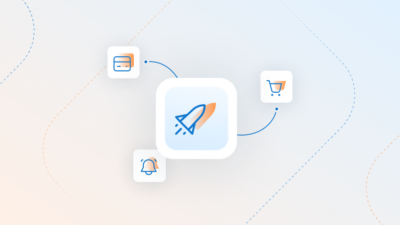B2B lead generation is more than just presenting prospects with fancy features and benefits.
For example, not long ago, we were migrating the subscriptions of a new customer into our system.
This process is normally straightforward, but in this case, we ran into a delay. Even though it wasn’t our fault, the delay meant this company might not be able to process existing subscriptions for several days — a poor way to start a relationship with a new software-as-a-service company.
Now, we could’ve told them, “Figure out how to stay with your current provider for another month so you don’t lose revenue while we sort this out.”
But I’m a sales leader, and sending business to my competitor is always an option I’d prefer to avoid.
A Simple Solution: We Called Each of Their Customers
Rather than frustrating our new customer with a delay, we simply looked up how many rebills they had to process in the next few days.
There weren’t that many, so we just called their customers on our own and asked them to enter their credit card information into the new payment system.
It was a low-tech solution, but it was effective. It showed our commitment to their success, and it kept them from losing revenue (and possibly customers!) as they switched to our payment platform.
What does all of that have to do with B2B lead generation?
Simple: Success in sales is often about going the extra mile to serve your customers any way you can. Time after time in my career, it’s creative solutions like these that close deals, delight customers, and lock in repeat business for years to come.
In this article, I’m going to share seven B2B lead generation strategies and tactics that I’ve found to be effective across my 20-year sales career.
Note: FastSpring is the No. 1 merchant of record service for growing SaaS and software businesses. Learn more about how FastSpring can help you grow your business worldwide.
1. Be Incredibly Curious
Many sales reps are often too quick to jump to solutions when instead, they should just be curious. With curiosity, you’ll find out details that will surprise and even benefit you in the sales process.
For example, you might discover that a prospect is on the brink of losing her job if she doesn’t solve her problem. Or maybe you learn she’s on the cusp of earning a nice family vacation if she does.
When you jump too fast to offer a solution, you overlook details that indicate your prospects’ motivations. You also run the risk of losing credibility by recommending a solution that a prospect has already tried.
2. Measure Your Results
This might sound crazy, but I often think of B2B sales as similar to cooking scrambled eggs. Unless your eggs are 100% cooked, they won’t be any good.
The same can be said about B2B sales. Until you close the deal, everything you do before the sale doesn’t matter.
A lot of inexperienced sales reps judge their success based on how much work they’ve done — not on the results they’ve achieved.
A deal that’s 70% cooked is the same as 0% cooked. Whether you’ve spent five minutes or five months on a deal, it’s only when you close that you have something to show for your work.
3. Make It Easy for the Prospect to Buy
You have to make it easy for your buyers to buy — and that’s true even if it means doing something that isn’t in your standard process or scope.
The story above about importing customer credit cards by calling people to get them to re-enter their information?
Obviously, that wasn’t in our standard process or even part of our normal scope of work. But it gave us an opening to close the deal, so we took it.
4. Leave a Footprint
I often see plenty of salespeople who are afraid to leave a message when they call a prospect. They’ll call someone three times a day yet never leave a voicemail.
Doing that is a lot like the scrambled eggs story I mentioned earlier. By calling or following up without leaving a message, you’re taking an action that doesn’t actually cook your breakfast.
You have to be purposeful with every action you take. That means leaving a footprint.
Don’t call if you’re not going to make sure someone knows you called. Don’t send someone an email just to check in. Follow up in ways that deliver value for your prospects.
5. Call Everyone
Another way many salespeople miss the opportunity to leave a footprint is by not reaching out to everyone in an organization.
Let’s say you’re trying to sell to a sales manager, but the only name you have is for a sales rep at the company. Don’t avoid the company waiting on the perfect information. Use what you have and call that rep so you can introduce yourself.
You don’t even have to ask him to put you through to his manager. Just be curious.
Find out if they have a problem your software solves. Ask for their recommendation for who you should talk to. And ask how he would approach his manager if he were in your shoes.
This is how you get into a B2B prospect — by calling anyone and everyone until you gain some information, then using that information to connect with the right people.
6. Work Together With Marketing
The idea of friction between marketing and sales is completely foreign to me. For most of my career, these two departments have always been lockstep with each other.
Getting sales and marketing on the same page starts with coming from a place of genuine alignment — not KPIs. Both departments have to see themselves as siblings.
When they’re aligned, differentiating between marketing qualified leads and sales qualified leads becomes irrelevant. All that matters is finding and closing more of the right-fit customers.
Some of the most effective tactics for getting sales and marketing on the same page might not sound like rocket science. But they can feel like science fiction when they work.
They’re tactics like:
- Encouraging sales reps to learn information from a prospect that can help marketers create more effective nurture tracks.
- Empowering sales reps to act when a customer engages with marketing materials such as blog posts and other content.
Don’t wait for marketing to engage your target customer. As a salesperson, that’s your responsibility too.
7. Always Do What’s Best for the Customer (Even When It Won’t Impact This Quarter)
If it’s clear that a prospect isn’t interested in your software, change directions. Pivot to a place of education instead.
This is another area where curiosity comes into play. Start leaning into questions like:
- What problem is the prospect trying to solve in their business?
- What are their biggest challenges?
It might be related to the product you sell. It might not. Whatever their issues, be a resource.
You can then send them content created by your marketing team that addresses those issues. Or you could point them in the direction of other people who’ve stood in their shoes and overcome the same problems.
Having your prospects’ best interests in mind might not always lead to an immediate sale. But it can bring them one step closer to trusting you more.
A year from now, when they are in the market for a product like yours, they’ll remember that you went out of your way to help — even when it wasn’t going to earn you a commission.
8. Vary Your Stories, and Don’t Give Up!
Finally, a mistake that a lot of sales reps make is that they’ll engage prospects with the same message over and over again. And when it doesn’t get a response, they’ll assume those prospects aren’t interested.
But it could just mean that the prospects don’t care about that specific message — or that specific message right now.
The most successful sales outreach cascades from one topic to another over time.
If the concept you’re talking about now doesn’t click, wait a little bit.
Then, move on to another topic, reach out again, and see if you get a response.
The next thing you know, a year will have passed, and you’ll find yourself recycling the same message you started with.
And sometimes, a year later, things will be different, and you’ll get a response this time — because now they have a need.
Never assume that a lack of interest means they’ll never become a customer. Just because they’re not interested today doesn’t mean they won’t be in the future.
So don’t give up!
Note: FastSpring is the only merchant-of-record provider with built-in tools to help you close larger B2B deals. Learn more about our Digital Invoicing and Interactive Quotes, two of our best B2B sales tools.









